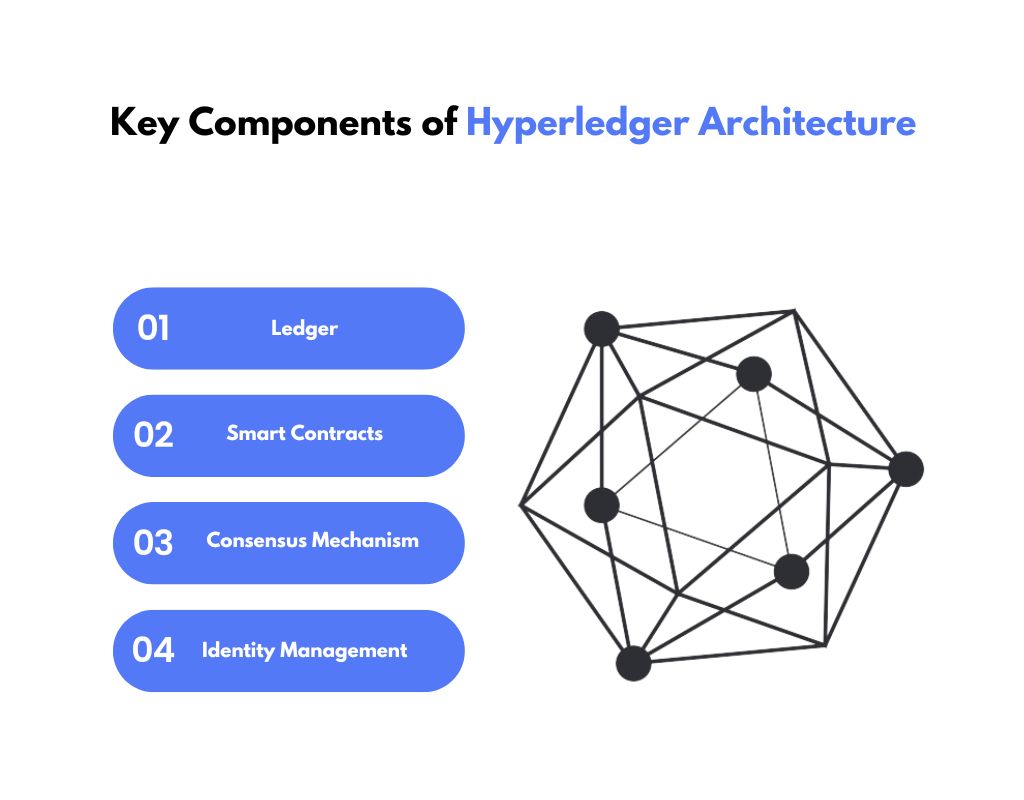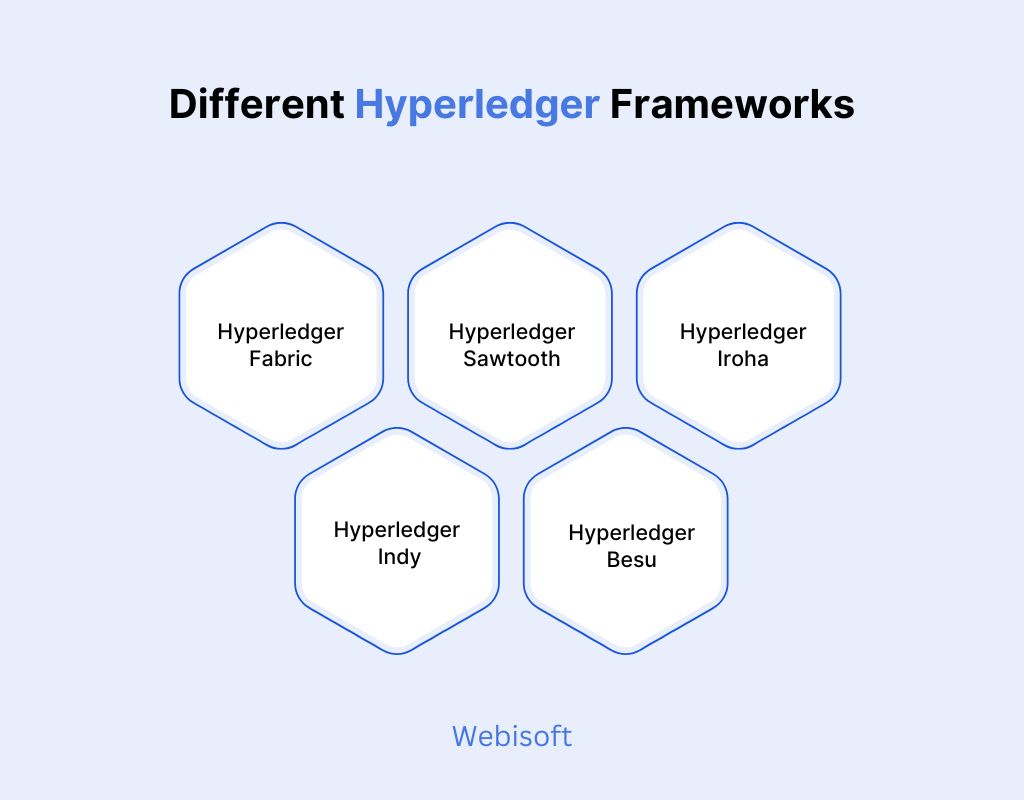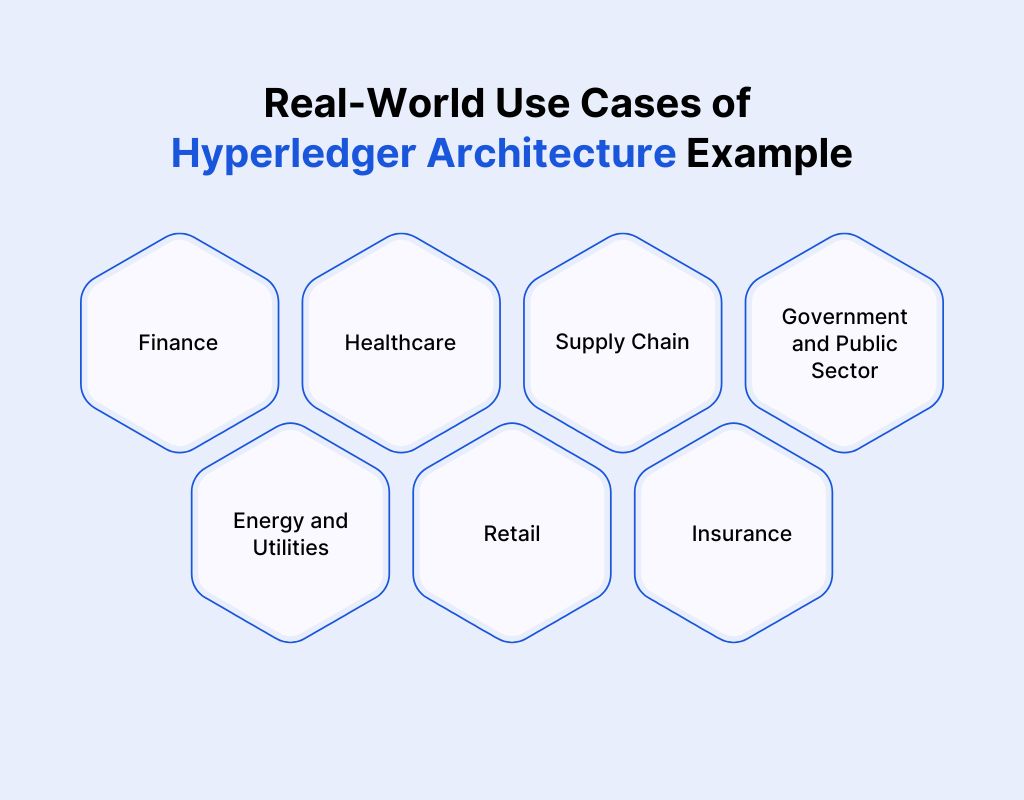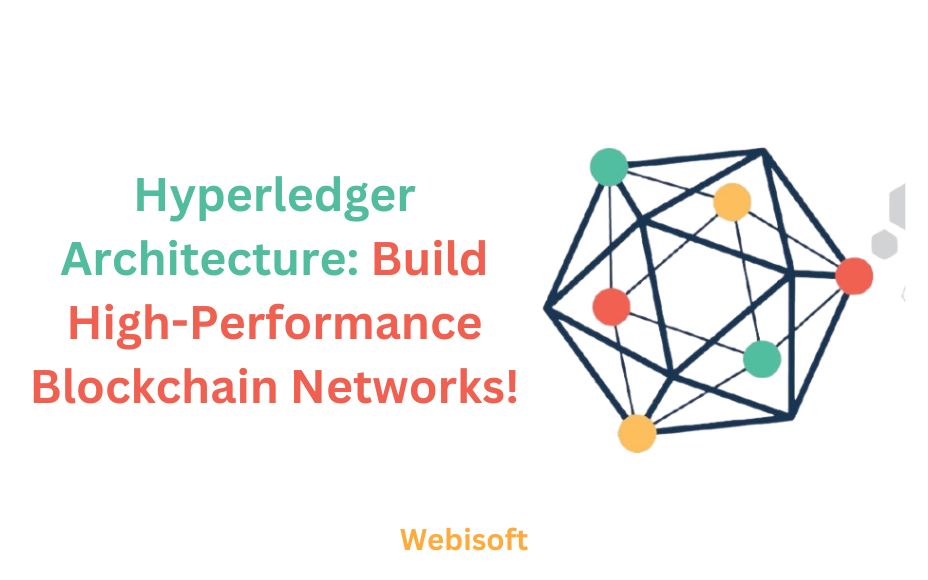Hyperledger Architecture in blockchain is like a well-organized puzzle. It brings together different components to build a strong, scalable blockchain solution for businesses. The structure includes modules that handle everything from consensus to smart contracts.
Think of it as a toolkit for businesses to create custom blockchains with more access to data. It’s not just one-size-fits-all, but rather a flexible system that adapts to different needs. Whether you’re building for finance, healthcare, or supply chains, Hyperledger provides the building blocks to create secure systems that keep things running smoothly.
Let’s read on to explore more!
Contents
- 1 What is Hyperledger?
- 2 Key Components of Hyperledger Architecture
- 3 Different Hyperledger Frameworks
- 4 How Hyperledger Architecture Benefits Businesses
- 5 Real-World Use Cases of Hyperledger Architecture Example
- 6 Conclusion
- 7 FAQs
- 7.1 1. What are the costs of implementing Hyperledger for my business?
- 7.2 2. How can I ensure data privacy on a public blockchain?
- 7.3 3. Is Hyperledger scalable for global businesses with high transaction?
- 7.4 4. How can Hyperledger handle regulatory compliance?
- 7.5 5. Can Hyperledger integrate with my existing systems?
What is Hyperledger?
Hyperledger is part of an open-source blockchain project development. It helps businesses build custom, secure, and scalable blockchain systems. Unlike public blockchains, Hyperledger is permissioned, meaning only authorized users can access and participate in the network.
This gives companies more control over their data and transactions. Hyperledger’s architecture is flexible. It allows companies to choose components that best fit their needs. Whether in finance, healthcare, or supply chains, Hyperledger’s design is adaptable for various industries.
Key Components of Hyperledger Architecture

Hyperledger’s architecture is made up of several key components that work together to create a blockchain network. Each component serves a unique function, making it adaptable to different industries. Here’s a detailed look at the core components of Hyperledger Architecture Diagram:
1. Ledger
The ledger is the foundational component of Hyperledger. It is a distributed database that stores all the transactions and states of the blockchain. The ledger’s structure is designed to ensure data integrity, immutability, and consistency across all participants in the network.
- Blockchain: The blockchain is a chain of blocks, each containing a batch of transactions. Every time a new transaction occurs, a new block is added to the chain. This provides a permanent, time-stamped record of all actions in the network. Once a block is added, it cannot be altered or deleted, ensuring transparency and accountability.
- State Database: The state database stores the most current state of the blockchain. It keeps track of the latest information, such as account balances or the status of assets. While the blockchain holds historical data, the state database offers a quick reference to the most up-to-date details.
The combination of both ensures that Hyperledger’s ledger can provide both historical data and real-time information, offering full traceability and reliability.
2. Smart Contracts (Chaincode)
Smart contracts, also known as chaincode in Hyperledger, are self-executing programs that automatically carry out the terms of a contract when predefined conditions are met. These contracts eliminate the need for intermediaries by automating transactions and agreements.
- Logic and Rules: Chaincode defines the rules for how transactions should behave. For example, it could define the conditions under which a payment is made or a product is delivered. Once the specified conditions are met, the contract is automatically executed, ensuring no human error or delay in processing.
- Customization: Hyperledger allows businesses to create smart contracts that are highly customizable to their specific use case. Whether the business is in finance, healthcare, or supply chain, chaincode can be tailored to meet the operational requirements.
- Languages: Chaincode can be written in programming languages like Go, Java, or JavaScript, offering flexibility to developers familiar with those languages. This also means that businesses can easily integrate Hyperledger with their existing systems.
3. Consensus Mechanism
Consensus is a fundamental concept in blockchain technology. It’s the process through which all participants in the network agree on the validity of transactions. Hyperledger provides a modular consensus framework that allows businesses to choose the most suitable model for their network.
- Practical Byzantine Fault Tolerance (PBFT): PBFT is a consensus algorithm used to maintain the integrity of the network, even when some participants behave maliciously or fail to function correctly. This model allows the system to continue processing transactions smoothly despite faulty nodes.
- Raft: Raft is a leader-based consensus mechanism, ideal for simpler and more efficient consensus. In this system, one node acts as the leader, coordinating the validation process for all transactions. Raft is easier to implement and can process transactions quickly, making it a good choice for networks that prioritize speed over decentralized governance.
- Kafka: Kafka is a distributed messaging system used to ensure data consistency and fault tolerance. It’s particularly suitable for larger networks where high throughput and reliable messaging are needed. Kafka ensures that messages (or transactions) are delivered in order and without loss, even in the event of node failures.
Each of these models offers different trade-offs in terms of speed, security, and scalability. Hyperledger allows businesses to select the best consensus mechanism for their needs, ensuring efficiency and reliability within the network.
4. Identity Management
In a permissioned blockchain like Hyperledger, identity management is crucial. It ensures that only authorized users can access and interact with the network. Hyperledger uses a robust system of digital identities to manage and secure participants’ access.
- Hyperledger Indy: This is a specialized framework within the Hyperledger ecosystem designed to handle decentralized identity management. It allows individuals to maintain control of their personal information while ensuring that organizations can trust the identity of the participants they are interacting with.
- Digital Certificates: Participants are assigned unique digital certificates that define their role and permissions in the network. These certificates are used to authenticate users and verify their identity before allowing them to interact with the blockchain. It ensures that only trusted parties are allowed to participate in the consensus process and access sensitive data.
- Access Control: Hyperledger’s identity management system includes detailed access control features. It lets network administrators set permissions based on roles and policies, determining which participants can perform specific actions. For example, some users may be authorized to view data, while others can add new transactions.
By managing identities this way, Hyperledger ensures that participants’ data remains private, secure, and only accessible to authorized individuals. It also minimizes the risk of fraud and unauthorized access, which is especially important in industries like healthcare and finance.
Different Hyperledger Frameworks

Hyperledger is a collection of blockchain frameworks, each designed to meet specific business needs. These frameworks provide flexibility, allowing companies to build custom blockchain solutions.
Here’s a detailed look at each of the key Hyperledger frameworks:
1. Hyperledger Fabric
Hyperledger fabric architecture is the most popular framework within the Hyperledger ecosystem. It’s designed for enterprise applications and offers high flexibility and scalability.
- Modular Design: Fabric has a modular architecture. It allows businesses to choose different components based on their needs, such as consensus, membership services, and privacy features.
- Channels: One of Fabric’s unique features is channels. A channel is a private, isolated network within the blockchain, allowing specific participants to transact without revealing data to the entire network.
- Pluggable Consensus: Fabric supports different consensus mechanisms, allowing companies to choose the one that best suits their requirements, such as PBFT or Raft.
- Smart Contracts (Chaincode): Fabric uses chaincode to execute business logic and automate transactions. Chaincode can be written in Go, Java, or JavaScript, making it easy to integrate with existing systems.
- Privacy and Security: Fabric ensures data privacy through channels and offers fine-grained access control using digital certificates. This makes it ideal for industries like finance and healthcare, where security is crucial.
2. Hyperledger Sawtooth
Hyperledger Sawtooth is another robust framework, designed for scalability and flexibility. It’s particularly suited for applications that require parallel transaction processing and low energy consumption.
- Parallel Transactions: Sawtooth supports parallel transactions, meaning that multiple transactions can co-occur, improving throughput and efficiency.
- Proof of Elapsed Time (PoET): PoET is the consensus algorithm used by Sawtooth. It is an energy-efficient alternative to Proof of Work (PoW), making it an environmentally friendly option for blockchain networks.
- Dynamic Consensus: Sawtooth allows for dynamic switching of consensus algorithms. This means businesses can choose the best mechanism based on their current needs, giving them flexibility as the network evolves.
- Transaction Families: Sawtooth supports “transaction families,” which are customized groups of transactions that can be tailored to specific use cases. This enables businesses to create specialized blockchain networks for various industries.
3. Hyperledger Iroha
Hyperledger Iroha is designed for simplicity and ease of use. It is ideal for businesses looking for a simple blockchain solution with easy integration.
- Simplicity: Iroha focuses on providing a straightforward, easy-to-deploy blockchain solution. Its user-friendly interface and APIs make it a good choice for developers who may not have extensive blockchain experience.
- Mobile-First: Iroha is particularly suited for mobile applications. Its simple architecture allows businesses to build blockchain-based solutions for smartphones and tablets with ease.
- Consensus Mechanism: Iroha uses a Byzantine Fault Tolerant (BFT) consensus algorithm to maintain the security and integrity of transactions.
- Asset Management: Iroha is equipped with features for asset management solutions, which is helpful for industries that require tracking ownership or transactions of goods and services.
4. Hyperledger Indy
Hyperledger Indy is a specialized framework for decentralized identity management. It allows individuals to control their data while ensuring trust and privacy.
- Self-Sovereign Identity: Indy enables self-sovereign identities, meaning users have complete control over their personal information. This is a significant shift from traditional identity systems, where centralized authorities control data.
- Decentralized Identity: Indy enables decentralized, verifiable identity management. This allows users to prove their identity without revealing unnecessary personal information.
- Use Cases: Indy is beneficial in sectors like finance, healthcare, and government services, where secure identity management is critical. It can also be applied to digital credentialing, like academic certificates or professional certifications.
5. Hyperledger Besu
Hyperledger Besu is an Ethereum-compatible framework designed for enterprise blockchain solutions. It allows businesses to build permissioned networks while leveraging Ethereum’s capabilities.
- Enterprise-Grade Ethereum: Besu is an Ethereum client that is optimized for enterprise use. It provides businesses with the ability to use Ethereum’s features in a permissioned setting, offering greater security and control.
- Ethereum Compatibility: Besu supports Ethereum’s popular smart contracts and dApps (decentralized applications), allowing businesses familiar with Ethereum to deploy their solutions in a private environment.
- Public and Private Networks: Besu can be used for both permissioned and public blockchain networks, providing flexibility depending on the business needs. It offers several consensus mechanisms, such as Proof of Authority (PoA), making it suitable for private enterprise use.
- Integration with Existing Ethereum Networks: Besu offers easy integration with other Ethereum-based networks, making it ideal for companies looking to expand or bridge into the Ethereum ecosystem.
Framework Comparison Table
Here’s a comparison table to help you better understand the key features of each Hyperledger framework. It highlights their primary use cases, consensus mechanisms, modularity, privacy features, and more, giving you a clearer view.
| Feature | Hyperledger Fabric | Hyperledger Sawtooth | Hyperledger Iroha | Hyperledger Indy | Hyperledger Besu |
| Primary Use Case | Enterprise blockchain solutions | Scalable applications | Simple blockchain solutions | Decentralized identity management | Ethereum-compatible solutions |
| Consensus Mechanism | Pluggable (PBFT, Raft, etc.) | Proof of Elapsed Time (PoET) | Byzantine Fault Tolerant (BFT) | Self-sovereign identity management | Proof of Authority (PoA), IBFT |
| Modularity | Highly modular, customizable | Flexible with dynamic consensus | Simple, easy to deploy | Focused on identity management | Compatible with Ethereum tools |
| Privacy Features | Channels for private transactions | Public ledger, low energy usage | Minimal privacy features | Strong privacy for identities | Private and public network support |
| Smart Contracts | Chaincode in Go, Java, or JavaScript | Transaction families | Simple APIs, mobile focus | Digital identity management | Ethereum-based smart contracts |
| Main Strength | Privacy, security, and flexibility | Scalability, low energy consumption | Mobile-first, easy to deploy | Identity verification, trust | Ethereum compatibility |
How Hyperledger Architecture Benefits Businesses
Hyperledger’s architecture offers numerous advantages for businesses looking to implement blockchain technology. These benefits help companies streamline operations, reduce risks, and improve trust.
Let’s explore how Hyperledger can provide value to businesses.
1. Flexibility for Custom Blockchain Solutions
Hyperledger’s modular design gives businesses the flexibility to build tailored blockchain solutions. Companies can choose the components they need, such as consensus mechanisms and privacy features, based on their specific use case.
This adaptability means that businesses don’t have to settle for a one-size-fits-all solution. Whether it’s a financial service, supply chain, or healthcare application, Hyperledger provides the tools to create custom blockchain networks that align with a company’s exact requirements.
2. Enhanced Security and Privacy Features
One of the key benefits of Hyperledger is its strong focus on security and privacy. Hyperledger uses advanced cryptographic techniques to ensure that all transactions are secure. In permissioned networks, only authorized participants can access data, making the blockchain more secure against external threats.
Hyperledger’s channels feature allows data to be kept private among a specific group of participants. This ensures that sensitive information is not exposed to the entire network. In addition, identity management tools help track and verify the participants in the network, reducing the risk of fraud.
3. Transparency and Traceability in Supply Chains and Transactions
Blockchain technology is widely known for providing transparency, and Hyperledger is no exception. The ledger in Hyperledger stores all transaction data in a transparent and immutable format. Once a transaction is recorded, it cannot be altered or deleted.
For supply chains, this means that every step of a product’s journey, from raw materials to the final product, can be traced. Companies can track the authenticity and condition of goods at every stage. This increases accountability and trust between suppliers, manufacturers, and consumers.
4. Scalability for Large Enterprise Applications
Hyperledger’s architecture is built to scale. Whether a business is just starting or has thousands of users, Hyperledger can handle a growing number of transactions without compromising performance. Its modular structure ensures that companies can scale their blockchain networks as needed.
As businesses expand and demand for blockchain solutions increases, Hyperledger can seamlessly accommodate more users and transactions. This scalability allows businesses to focus on growth without worrying about blockchain infrastructure limitations.
Real-World Use Cases of Hyperledger Architecture Example

Hyperledger, an open-source collaborative effort hosted by the Linux Foundation, has emerged as a leading blockchain framework for enterprises seeking to enhance transparency, security, and efficiency across various sectors.
According to IBM, innovators in sectors such as finance, banking, healthcare, IoT, supply chain, manufacturing, and technology are leveraging Hyperledger Fabric to achieve tangible business outcomes.
1. Finance
In the financial sector, Hyperledger facilitates secure and transparent transactions, reducing fraud and operational inefficiencies. By implementing Hyperledger Fabric, financial institutions can streamline processes such as payments and settlements, enhancing trust among stakeholders.
2. Healthcare
Hyperledger addresses critical challenges in healthcare, including data interoperability and security. By utilizing its decentralized ledger, healthcare providers can securely share patient data, ensuring privacy and compliance with regulations. This interoperability enhances care coordination and patient outcomes.
3. Supply Chain
Supply chain management benefits significantly from Hyperledger’s traceability features. For instance, IBM and Walmart collaborated to use Hyperledger Fabric to trace food products from origin to store, enhancing transparency and safety. This system allows for rapid response to food safety issues, reducing waste and protecting consumers.
4. Government and Public Sector
Governments are adopting Hyperledger to enhance transparency and reduce corruption. By implementing blockchain solutions for public records and transactions, citizens can trust that governmental processes are secure and tamper-proof, fostering greater civic engagement and trust in public institutions.
5. Energy and Utilities
The energy sector utilizes Hyperledger for decentralized energy trading platforms, allowing consumers to trade energy directly, promoting renewable energy use, and enhancing grid efficiency. This peer-to-peer system reduces reliance on centralized utilities and encourages sustainable practices.
6. Retail
Retailers are implementing Hyperledger to authenticate products and manage supply chains, ensuring customers receive genuine products. This transparency enhances brand trust and customer loyalty, as consumers are increasingly concerned about product authenticity.
7. Insurance
In the insurance industry, Hyperledger streamlines claims processing and policy management through smart contracts, reducing administrative costs and errors. This automation leads to enhanced software quality and improved customer satisfaction.
Conclusion
Hyperledger offers a super powerful architecture for building enterprise-grade blockchain solutions. Its modular design allows businesses to customize blockchain networks to meet their specific needs, from financial services to supply chain management.
As industries continue to adopt blockchain technology, Hyperledger’s potential for driving innovation and efficiency grows. Its scalability makes it an ideal choice for large enterprises, and its use across sectors such as finance, healthcare, and retail demonstrates its versatility.
FAQs
1. What are the costs of implementing Hyperledger for my business?
The cost of implementing Hyperledger can vary depending on the complexity of the use case, the number of participants, and the resources required for setup and maintenance. You’ll need to factor in costs for infrastructure, development, integration, and ongoing support.
2. How can I ensure data privacy on a public blockchain?
Hyperledger uses permissioned blockchains, which means that only authorized participants can access the network and view the data. This allows businesses to maintain privacy and control over sensitive information while still leveraging blockchain’s transparency features.
3. Is Hyperledger scalable for global businesses with high transaction?
Yes, Hyperledger is built with scalability in mind. Frameworks like Hyperledger Fabric and Hyperledger Sawtooth can handle a large number of transactions without sacrificing performance. Many enterprise applications with high transaction volumes have successfully scaled with Hyperledger.
4. How can Hyperledger handle regulatory compliance?
Hyperledger allows businesses to tailor their blockchain solutions to comply with industry-specific regulations. Smart contracts can enforce compliance rules automatically, reducing human errors and improving transparency. However, companies must design their networks according to their specific needs.
5. Can Hyperledger integrate with my existing systems?
Yes, Hyperledger is designed to be modular and flexible, making it possible to integrate with legacy systems. It offers APIs and SDKs to help facilitate integration with other enterprise applications. However, the ease of integration depends on your current infrastructure and the specific requirements.
